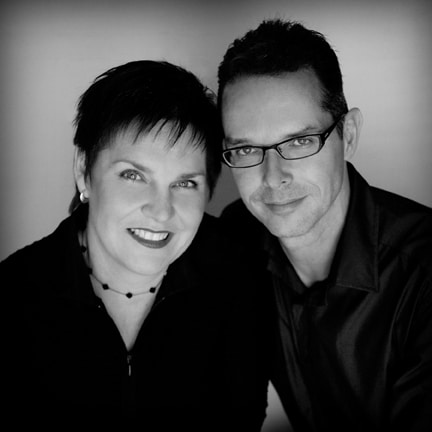
If you ask people what it might mean to research the system of Reiki you will get many different ideas, some scientific, some historical, some energetic. Research, therefore, can be accomplished at many levels.
If we were wanting to research something specific – such as what the intent behind the teachings of the system of Reiki was – how would we go about that? We could look at…
A: The time frame that Usui Mikao lived: 1865 – 1926 in Japan.
Many spiritual practises came into being in Usui’s life time due to Japan opening its doors to the rest of the world. There was a major reaction against outside influences and many Japanese looked for methods of retaining traditional ways. New practises were developed from ancient Japanese practises. These new practices were called shinko shukyo in Japan, which in English can be translated as New Religions. This does not mean that the system of Reiki is a religion, but it was definitely influenced by a number of spiritual traditions from that time.
B: Influences on Usui Mikao.
Usui would not have just started teaching the system of Reiki out of the blue. He was at least 40 when people began to seek him. Throughout his life he would have practised teachings for his personal growth, and it is these practises that would have brought him to a state of understanding in order to develop the system of Reiki.
Most spiritual practises and New Religions from Usui’s time utilised aspects of ancient Japanese spiritual practises as their base. Some popular bases were Shugendo, Mikkyo, Tendai, Shingon and Shinto. Therefore, to understand the background of more modern teachings such as the system of Reiki, it is of great benefit to read about, study and experience these older Japanese traditions. Using this method we can begin to see how the system of Reiki was pieced together and appreciate its orgins.
For example, it is said that during reiju Mikao Usui would just sit opposite the student and allow reiju to take place without any physical movements or visualizations. This method of initiation is also used within Tendai, Shugendo, Mikkyo and Shingon and is known as ishin kanjo (Jap: initiation based on the mind).
Taiko Yamasaki, former Dean of the Department of Esoteric Studies at Suchi-in University in Kyoto, states that ishin kanjo is considered the highest form of initiation. One that is an intensely individual process based on the unique relationship between teacher and student, and only performed by senior priests who are suited by capacity, affinity and learning.
C: Find Differences as well as Similarities between current Japanese Practises.
Look at other spiritual practises and New Religions which started at that time and note the the differences and similarities between each of the practises as well as the system of Reiki. In their modern forms, many of the teachings do have similar foundations and structures. Elements of similarity can be found between Omooto, Tenrikyo, Kurozumikyo and the system of Reiki.
D: Reading Books by and about Students of Usui.
There are publications to be found by Usui’s students such as Toshihiro Eguchi and Kaiji Tomita. What are their similarities and differences?
E: Having direct experiences of the five elements of the system of Reiki.
The system of Reiki has five main elements to it – precepts, meditations, hands-on healing, symbols and mantras, and reiju. To actually experience these elements is the ultimate personal method of research. Here you will KNOW what the intent of the system of Reiki is.
For example…
Undergo a direct experience of Earth energy by working with the first symbol and mantra taught at Okuden level II.
Undergo a direct experience of non-duality by working with the kanji (symbol) and mantra taught at Shinpiden level III.
Experience teaches you from within. This is superior to simply believing what you are told or have read.
Experience is one of the most difficult forms of research as it requires dedication, perseverance and the guidance of a qualified teacher. This is something that cannot be achieved in a weekend or a month course, it may take years and years of practise.
Yet, by uilising the above methods we can begin to catch a glimmer of what has been added to the system over time and how ideas and philosophies have changed. Together these methods can give us greater insight into what we do and why we do it.
To see this for ourselves we can examine Mikao Usui’s memorial stone. On it, it states that Usui practised kushu shinren. This practise is a form of Shugyo – renowned as a very demanding practise which requires much time and effort. This practise aids the practitioner in reaching deeper levels of consciousness.
Shugyo was practised within Shugendo.
The memorial stone goes on to state that Usui engaged in the art of divination, incantation, and physiognomy.
Once again, these kind of practises were utilised within Shugendo.
The role undertaken by shugenja [was] offering religious services such as fortune telling and divination (bokusen) [and] prayers or ritual incantations (kito).
Miyake Hitoshi – Shugendo: Essays on the Structure of Japanese Folk Religion
Some of the founders of new religions had revelatory experiences while performing religious practices on sacred mountains, and some of the rituals created by new religions bear imprint of Shugendo rituals; indeed, the highly syncretic character of Shugendo laid down a precedent for the syncretic pattern of most new religions.
Miyake Hitoshi – Shugendo: Essays on the Structure of Japanese Folk Religion
Research is there for us all to find and to influence our own practises.
Bronwen and Frans Stiene are the co-founders of the International House of Reiki and co-authors of The Reiki Sourcebook, The Japanese Art of Reiki, Your Reiki Treatment, The A-Z of Reiki Pocketbook and the Reiki Techniques Card Deck. Bronwen and Frans teach in the USA, Europe and Australia. Visit the Courses page to find a course near you.


Comments 1
Simply believing what is written and said only brings perhaps intellectual knowledge which can make one talk all “wise” in “speech” but it doesn’t necessarily do a lot to mind in deeper way. Researching by direct experience is definatly the hardest one to do but then again I think if we see it is not easy to explain ” energy” in just intellectual terms if you haven’t directly experienced it as with direct experience you have your own inner wisdom , knowledge and confidence which comes out.